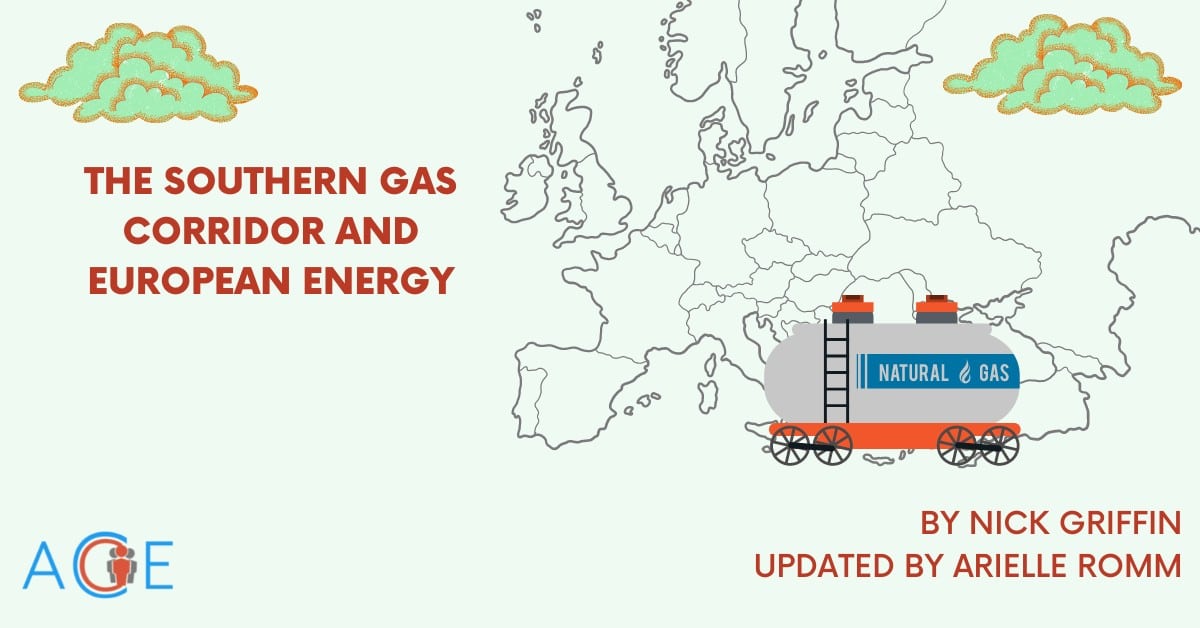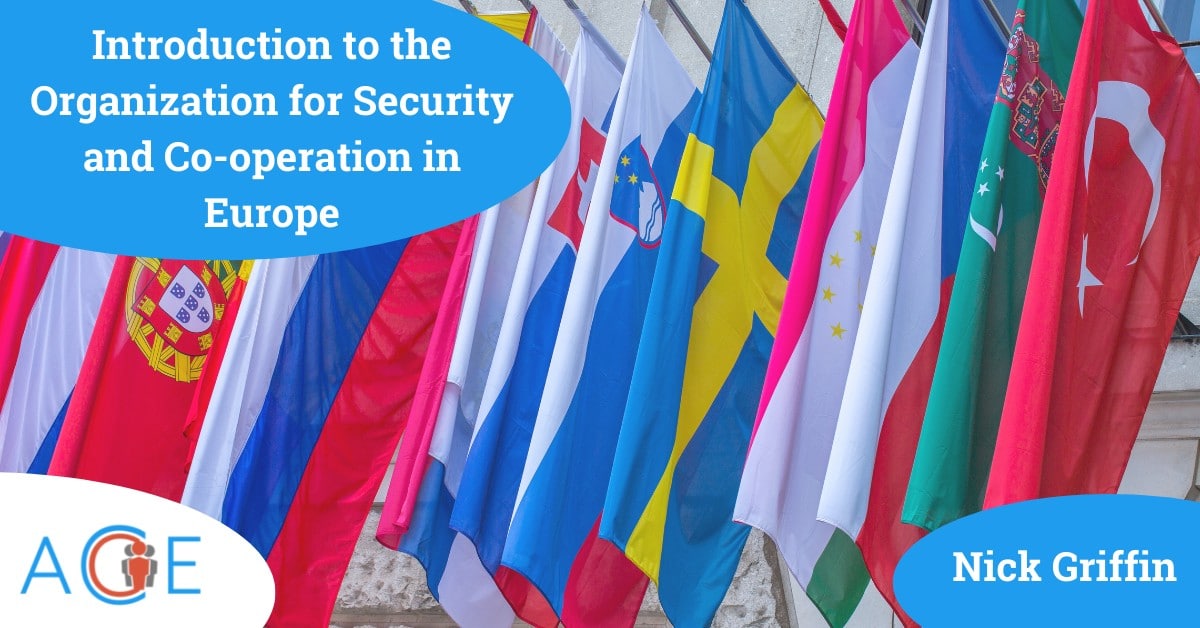This brief was originally written by Nick Griffin. Before its publication, it was updated by Arielle Romm.
As Europe transitions away from fossil fuels and towards green energy, natural gas has filled the gap between what existing fossil fuel generators are permitted to produce and clean energy sources are capable of providing. Natural gas generates about 22% of Europe’s energy supply, of which Russia supplies 33%. Russia’s influence over Europe’s energy supply poses a security threat for the continent. The ongoing war in Ukraine and the West’s ensuing sanctions have disrupted the supply of essential fuel. Many target Russia’s lucrative energy industry, which U.S. President Joe Biden has called “the main artery of Russia’s economy” and the U.S. banned imports of Russian oil, gas, and coal entirely. As Russia becomes more aggressive, European leaders have begun to recognize the necessity of diversifying energy imports and look elsewhere for natural gas supplies. In light of this, Central Asia and the Southern Gas Corridor have become key players as a counterbalance to both Russian energy power and strategic considerations regarding China’s influence in the region.
The Invasion of Ukraine and Impact on Energy Supply
After Russia invaded Ukraine in late February, the United States, Europe, and other allies imposed sanctions to punish the nation for invading and deter further escalation. Though these sanctions aim to target the Russian economy, Europe and the West face steep energy prices as a result and may have to pay exorbitant gas prices if the conflict does not end quickly. Immediately following the invasion, gas prices rose 36% due to fear of sanctions impacting the European markets’ natural gas supply. The ongoing conflict has resulted in the destruction of pipelines and threatens to disrupt the flow of energy to European homes. In March of 2022, Putin set an ultimatum to Western nations that had previously been recipients of Russian gas and resources, requiring payment for gas in Russian rubles, rather than US dollars or euros. In the aftermath of this announcement, gas prices in the West jumped even further, and governments scrambled to find alternatives. Already, Russian energy giant Gazprom has halted the flow of gas to Bulgaria, Poland, and Finland, who refused to capitulate to the demands. Damaged Russia-West relations could impact the energy supply well into the future. Germany has canceled the certification of an important pipeline, Nord Stream 2, and sanctions could persist for years.
Building and Expanding the Southern Gas Corridor
The ongoing war in Ukraine has highlighted the necessity of diversifying, but plans to connect Central Asian energy with Europe have been in the works for more than a decade. In 2012, an agreement between Azerbaijan and Turkey resulted in a new, Trans-Anatolian pipeline to transport Azerbaijani gas from the Caspian Sea gas fields to European markets. Construction began in 2015 and was completed in 2018. The existing Trans-Anatolian pipeline (TANAP) was expanded to connect with Greece, Italy, and Southeastern Europe. Known as the Southern Gas Corridor, this energy source has become essential in recent weeks and could be the future of European energy. Further expansions are underway; the Gas Interconnector Greece–Bulgaria will connect to the Southern Gas Corridor pipeline in Stara Zagora. When the expansion is complete, Bulgaria is projected to import ⅓ of its natural gas from Azerbaijan.
Understanding Europe’s Dilemma
Although plans are currently in the works to fully transition to green energy (eliminating the need for gas pipelines altogether), Germany’s carbon emission reduction goals are currently set to a 65% reduction by 2030 and an 88% reduction in carbon emissions by 2040. The EU, recognizing the urgency of this energy shift, has pledged to spend €210 billion ($222 billion) to wean itself off Russian oil and gas through the REPowerEU plan. works to reduce its consumption of Russia’s gas by 66% before the end of this year, but may only be able to break its dependence completely before 2027 even at the best-case scenario. However, the most ambitious plans still require Europe to import natural gas at least a few more years, if not decades. Continued reliance on Russia is a security risk while changing suppliers to Turkey and Azerbaijan would shift the risk and support two regimes that have been accused of human rights violations.
- Azerbaijan, the source of the gas, has been called an authoritarian state by organizations like Freedom House. The leader of Azerbaijan, Ilham Aliyev, has ruled since a 2003 election that featured accusations of repression and intimidation of opposition candidates and rallies. Azerbaijan has been accused of violating its citizens’ human rights, including those of opposition leaders and journalists by Human Rights Watch. The country is also purported to have committed war crimes during the 2020 Nagorno-Karabakh War, including decapitations and mutilations of Armenian soldiers as well as the use of cluster bombs against civilian targets.
- Similarly, Turkey has been accused of clamping down on civil rights, limiting the free speech rights of dissidents and journalists, and criminalizing criticism of Turkish President Erdogan. Erdogan’s government has been charged with torturing political dissidents in prison.
China’s economic presence in Central Asia has grown in recent years. Already, China poses a counterbalance to the West’s efforts to use energy as leverage against Russia. In February of 2022, Russia and China signed a 30-year contract to supply gas to China via a new pipeline, agreeing to do so in euros, and increase their relationship since the 2019 signing of the Power of Siberia natural gas pipeline between the two. Since the beginning of Russia’s invasion of Ukraine, imports of Russian oil have risen by 55% from a year prior, taking Saudi Arabia’s place as China’s biggest oil supplier. This energy alliance is a distinct concern in the face of growing Western sanctions on Russian energy, leading to fears of a so-called “gas pivot” to China. China has also developed energy relationships with both Turkey and Azerbaijan, leading to increased fears of its growing influence in the region. The region is undergoing a geopolitical shift that continues to diminish ties to the Euro-Atlantic states and elevates China’s influence in Central Asia. Beijing and Moscow are the region’s principal economic, political, and security partners, a marker of declining U.S. influence.
United States Role and Consideration
The United States has long been concerned about Russia using energy supplies as a political tool to influence other nations. A recent report to the U.S. Senate Committee on Foreign Relations states that U.S. interests lay in “alleviating Russian gas-fueled pressure against NATO allies” and “bolstering bilateral relations in the Caspian Sea region.” U.S. diplomacy was critical in developing this project, and has opened doors for U.S. engagement in Central Asia, strengthening ties with Azerbaijan as an alternative to its relationship with Russia, and opened doors to advancing rule-of-law and climate investment issues. Even in the United States, domestic considerations have come into play as gas prices reach record highs. Although the U.S. does not import large amounts of Russian oil (and has now banned it), the lower supply caused by the conflict has prices rising as Europe seeks to find other sources, raising demand and cost globally.


